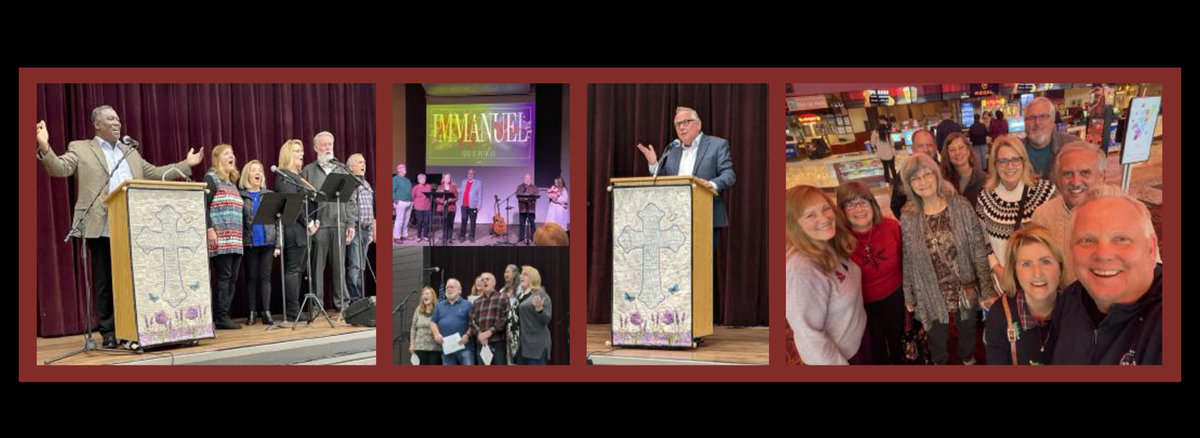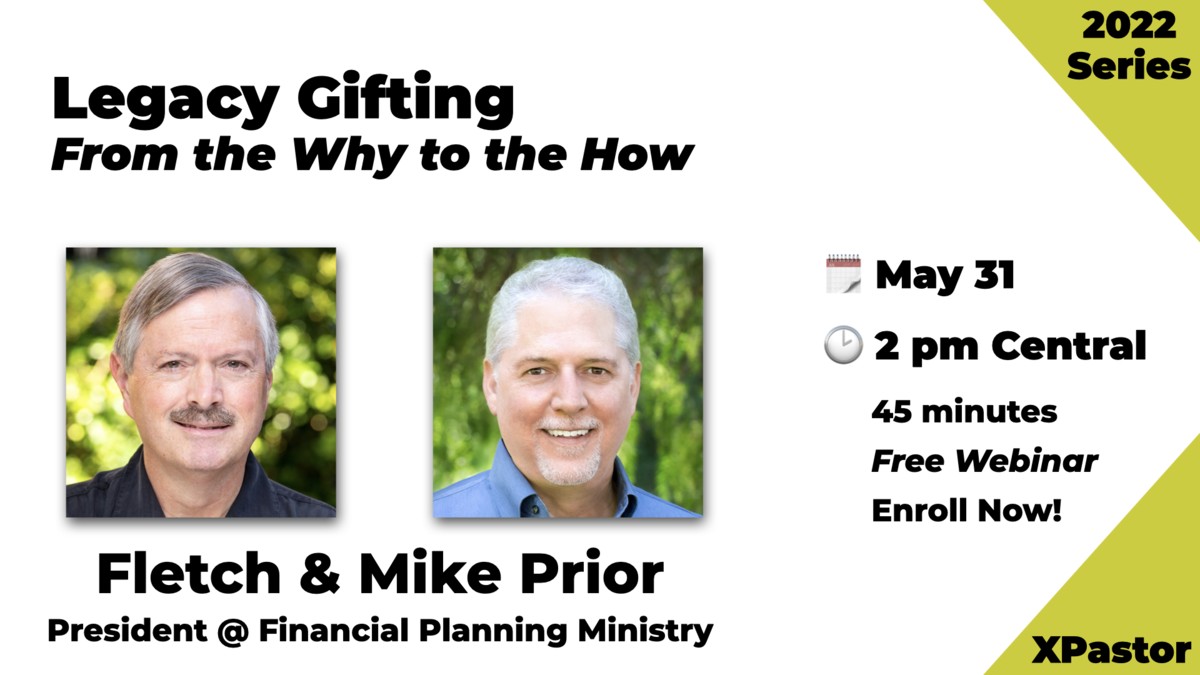The 365 days of 2013 may be the most successful giving year for churches for the last five years. Counter-intuitive? Hard to believe? No question, the days of low-hanging fruit in giving are gone. The recession and cultural shifts demolished the easy routine of simply asking and receiving a financial gift.
But Christ-followers rise to the moment. When the world says retreat, we say charge. When the world screams fear, we stand fearless and courageous. Our theology, our God’s very character, undergirds a rock solid hope and future so we can take the risk.
Tim Keller paints the counter-cultural frame:
The early church was strikingly different from the culture around it in this way—the pagan society was stingy with its money and promiscuous with its body. A pagan gave nobody their money and practically gave everybody their body. And the Christians came along and gave practically nobody their body and they gave practically everybody their money.
Even in the midst of great persecution, the Roman Emperor, Julian, complained about our early church comrades:
Why do we not observe that it is their (the Christians’) benevolence to strangers, their care for the graves of the dead, and the pretended holiness of their lives that have done most to increase atheism. For it is disgraceful that, when no Jew ever has to beg, and the impious Galileans (Christians) support not only their own poor but ours as well, all men see that our people lack aid from us.
While Christ-followers will respond in giving, they will not naturally or automatically give to your church. Givers will respond when led graciously, boldly and with passion grounded in faith.
Your church can have an incredibly successful year by recognizing and acting upon these ten issues for 2013.
1. Deliberately raise the value of generosity and giving
The default setting of typical church giving practices drains givers’ hearts. Church leaders that engage in a deliberate culture of generosity build and elevate givers’ hearts. Generosity is winsome and life-giving.
About twenty times a year, I work with a church in a generosity audit and pathway process. After a deep dive into all things generosity in the church, an analysis of giving patterns and interviews with leaders and givers, there is one clear take-away best framed by a statement from Contagious Generosity: “If a church is not clear about what it believes on the topic of giving and stewardship, then its members will not be either.”
Churches that are clear, consistent, transformational, and premeditated have abundance, not scarcity. Choose to be deliberate in 2013. Otherwise, your mission will go underfunded.
2. Demonstrate impact
Make evident and celebrate impact often and joyfully. Increasingly, our culture and givers are looking for impact. Church leaders believe obedience is the driving force in giving. While a piece of the practice of a Christian, more give generously where their hearts are attached and they see direct correlation in their giving and impact.
At my local YMCA, a recent addition demonstrates this deep impact drive. The water fountain now sports an immediate impact report prompting people to fill their own water bottles rather than fill the landfill. My act of filling the reusable bottle has instant feedback and personal benefit. My simple act of filling this bottle made a difference. This works big time. I enjoy seeing how much the number has increased on each trip to the Y.
Ask a supporter of a Compassion International child about their personal investment. They typically tell you the name, age, background, family, education and how long they have given. The impact is deep and wide. There is a fierce intention to give until the child reaches the 18-year age limit. They will throw you under the bus rather than give up investing in this deeply personal impact.
Can your givers tell you things about your church, your impact, their relationship to that impact just as passionately as they do about their child? It is possible. It takes hard work and purposeful intention and you will have fiercely loyal givers.
We convey partnership in a daring adventure. Mark Dillon gets it: “Money flows more readily to demonstrable results than to longevity, reputation or name.” Church leaders no longer can rest on the loyalty of people to past results. Each year is a new starting line for people to determine where they will give.
3. Challenge, not apology
Even in the midst of political and economic uncertainly in late 2012, people of faith are giving generously in many churches. The thread of success in these churches centers on challenge, relentless pursuit of vision, and passionate vision. Leaders who raise the bar and inflame the heart of givers with purpose will see abundance in giving.
The reports of success in this environment of challenge ring consistently. The 2-year-old church plant doubles its income over the next eight months to move into their first facility. A large church commits $48,000,000 over 24 months. And many more churches have similar results in between.
A church with an all-in mentality inspires givers.
4. Leaders personally model giving
How you give inspires givers.
The speed of the leadership makes the speed of the team. Givers easily spot if their leaders are all in or are pretending. The leader who is a casual giver cannot expect anyone to give beyond his level.
Stories from pastors I know:
- Giving 50% of his income to the church and to their opportunity project.
- Giving over 10% to the church and personally giving 100% of a global partner’s compensation.
- Giving 10% to the church and another 10% to the church project.
Not all leaders can give to these proportions. The stories, however, inspire. Lisa and I just increased our percentage giving because of some of these stories.
It is appropriate to tell your church how you are giving. The actual number is not the focus but the process and percentages are important. This step can be daring because some of us shy away from bragging or drawing attention to ourselves. Get over it. Lead your people in battle and let them join you on the front lines of giving.
Consider taking inventory of your leadership’s giving. You may be stunned at how your leaders and church officers are not giving, thereby disqualifying them to lead. When I found out a key staff leader who makes far above average pay has given $7,000 to the church—over the last ten years—I was stunned. The public persona did not match the private world. Leadership that fails to give is unacceptable.
5. Communication
A church that skillfully, relevantly and winsomely tells its story will thrive in giving.
People value relationship from where their giving flows. Obedience is only a small part of the reason they give. I see far too many numbers and dig way deep into church cultures to believe otherwise.
We grow a meaningful and endearing relationship with each giver and potential giver. How we engage and tell the story builds and enhances each relationship.
Not all people and relationships have a one-size-fits-all communication need. Mark Dillon frames this well:
The more we recognize the different kinds of donors and meet them at their level of need and expectation, the more worthy we will become of their support.
He identifies four giver types:
- The Gifted Giver: Has already settled the question of joyful giving. Rare, but they do exist.
- The Thoughtful Giver: Has already settled core giving beliefs and senses obligation to give. Will give from current income but will not necessarily adjust lifestyle to give.
- The Casual Giver: A vague understanding to give, but captivated by possessions and security. Most church people reside in this category.
- The Reluctant Giver: Offers very little, if any, of resources to give. Many church people are here.
Most church communication is efficient, but not effective. Learning how to engage each giver type will better serve and minister to each group.
The least effective place to communicate to givers is from the platform in the service. It is nearly impossible to meaningfully engage each type.
Giver communication occurs in many places. There are the more tangible expressions: first-time giver thank you note, quarterly vision statements, consistent electronic connection that is narrative not programmatic, thank you to very large gifts. There are more intangible pathways: the overall culture, the vibe of the mission, the consistency of celebrating mission, the normalizing of telling giving stories. Not one small step makes a difference. All small steps taken together make a huge difference. It is remarkable engaging to help a church align these steps.
Does it work? My colleague Jim just told me of a church that has a 2% growth rate but a 23% increase in giving this year. You tell me.
The most powerful place to tell your story is the sixty seconds before the offering. So many leaders tell me that moment is the least planned part of the worship service. Tragic. We get 52 intimate moments with our givers per year and fumble the ball.
If you want to know how to handle the offering moments well, email me and I will send you the ideas.
People only give to what they understand and where they feel emotionally connected.
A generous church has a viral effect on others.
6. Believe people want to respond
As leaders, it is our primary task to invite people to use their lives and finances to be rich toward God.
Money represents value and people will exchange that value for what is important in their lives. As we shepherd people in giving, we invite them into a life where their heart follows the treasure. Challenging people to give is an act of caring and the core of being a shepherd.
People need to know that money lies, creates false hope.
People will respond to the challenge. There is something about a church that gives itself away. Cotton Mather made a fascinating statement:
Let us try to do good with as much application of mind as wicked men employ in doing evil.
Generosity may be our best evangelism and discipleship implement in our toolbox. What if we had 50,000 churches just as passionate about doing good as men are about evil? That picture is a bright future!
7. Create and celebrate multiple on-ramps to give
Most church giving is on autopilot with offering being solely in the worship service. Since so few people arrive for worship with a checkbook or cash, a household must have forethought and practice to come with a gift.
People can give in worship, through the church website, online banking, mail, text, a card reader in the lobby, cash, iPads and non-cash gifts. The change in the verbiage is simple. For example, as an offering moment comes in worship, we can say:
Many of us have invested in this mission this week through the website, their bank bill pay or other means. For those of us who prefer to give in this context, we now receive our offering.
Celebrating all on-ramps is also important. One pastor does this statement once per month:
As Linda and I give through our bank bill pay automatically every two weeks, it is the best investment we make. As we enter this offering moment of worship, many of us will also make our best investment of the week.
In this simple declaration, the pastor affirms he gives and he celebrates (normalizes) the automatic giving option.
8. Lead higher capacity givers
1 Timothy 6 coaches leaders to instruct those who are rich in this present world to do several daring and courageous habits that will lay up a foundation for the future. Why would Paul kid around with Timothy on this pastoral function? We get to disciple high capacity givers like we would any other spiritual gift and discipline.
Not only is engaging those with capacity a pastoral function, but it is shrewd.
10% of the US population holds 71% of the wealth. The average amount given by high net worth households in 2011 was $52,770. As I analyze giving patterns, I can tell you that few churches have givers at that level and above. These households have their hearts engaged more deeply than places other than their church. We can change that. They would rather give to their church if they believed the church had impact.
The reality is that money is not distributed evenly.
All gifts are unevenly distributed. I got zero in the musical gift distribution. Your worship leader would be wasting time with me. He should spend time with those gifted in his area.
Higher capacity givers need more coaching. They tend to give from a strategy, are not spontaneous, are more intentional and want their gifts to have impact.
Our silence and presumption on their giving are disservices to this group.
9. Language shift
Churches and leaders are creatures of habit. Change comes slowly. That is why we stay in the groove of traditional giving language. Allow 2013 to incrementally shift the language of heart engagement and giving.
Stewardship becomes generosity. Capital campaigns become project opportunities. Annual reports become ministry impact stories.
Use consistent language to normalize generosity. A wise leader will repeat a phrase like this about 1,000 times this year: “We are a generous church.”
10. Understand that the poor economy is not the major factor in giving
It is a factor but probably in the last five of ten. Churches that were struggling before 2008 are struggling now. In general, the churches that were doing well before 2008 are doing well now.
There are significant numbers of churches that have an abundance and fuel their mission. Why not your church?
There is no generosity button. As my colleagues Jim and Chris state in Contagious Generosity:
Generosity is systematic. It is not one thing. It is a lot of things. These ideas must be practiced in concert with one another. It’s not a program or one-time emphasis but rather a repositioning of leadership and direction to ensure that a church is developing a culture of generosity over a longer period of time.











